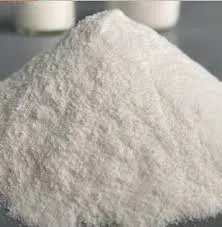
Nov . 04, 2024 19:50 Back to list
HPMC Gel Formulation Techniques and Preparation Methods for Optimal Performance
Preparation of HPMC Gel A Comprehensive Guide
Hydroxypropyl Methylcellulose (HPMC) is a versatile polymer widely used in the pharmaceutical, cosmetic, and food industries for its excellent film-forming, thickening, and stabilizing properties. HPMC gels are particularly valued for their biocompatibility and ability to provide controlled release of active ingredients. This article will delve into the process of preparing HPMC gel, outlining the necessary materials, equipment, and step-by-step procedures to ensure a successful and consistent formulation.
Materials Needed
1. Hydroxypropyl Methylcellulose (HPMC) The primary ingredient for gel formation. It is available in various grades, and the choice of grade depends on the desired viscosity and application.
2. Distilled Water To ensure purity and prevent contamination.
3. Preservatives (if required) Depending on the application, adding preservatives may be necessary to enhance the shelf life of the gel.
4. Active Ingredients Depending on the purpose of the gel, this could include pharmaceuticals, essential oils, or other functional agents.
Equipment Required
1. Heating Plate or Hot Plate For warming the mixture, aiding in the dissolution of HPMC.
2. Beakers and Mixing Bowls To hold and mix the ingredients.
3. Magnetic Stirrer or Hand Whisk To ensure thorough mixing and prevent clumping of HPMC.
4. pH Meter To measure the pH of the final gel, ensuring it meets the desired specifications.
5. Thermometer For monitoring temperature during gel preparation.
6. Dispensing Bottles or Containers For storing the final product.
Step-by-Step Preparation Process
Step 1 Measure and Prepare Materials
hpmc gel preparation

Start by measuring the appropriate amounts of HPMC and distilled water. A common formulation uses a concentration of HPMC between 1% to 5%, depending on the desired viscosity. For example, to prepare 100 ml of gel at a 2% concentration, you will need 2 grams of HPMC and 98 ml of distilled water.
Step 2 Heating the Water
Heat the distilled water to about 70-80°C. This temperature aids in the dissolution of HPMC and minimizes the formation of clumps. It is essential to avoid boiling the water, which could lead to undesirable changes in the properties of HPMC.
Step 3 Dissolve HPMC
Once the water reaches the desired temperature, slowly sprinkle the measured HPMC into the water while continuously stirring with a magnetic stirrer or whisk. This gradual addition helps prevent clumping and ensures a homogeneous mixture. Continue to stir until HPMC is fully dissolved and the solution becomes thick and gel-like.
Step 4 Cool the Mixture
After the HPMC is fully dissolved, allow the gel to cool to room temperature. During this stage, the gel will continue to thicken. Stir occasionally to maintain uniformity as it cools.
Step 5 Adjust pH and Add Preservatives
Once the gel has cooled, measure the pH and adjust it if necessary. The ideal pH for many formulations is between 6.0 and 7.5. If preservatives are required, add them according to the manufacturer's recommendations at this stage and mix thoroughly.
Step 6 Incorporate Active Ingredients
If the gel is intended to deliver active ingredients, add them now. This could include drugs, vitamins, or other functional agents. Ensure they are uniformly dispersed throughout the gel.
Step 7 Packaging the Gel
Finally, transfer the HPMC gel into clean, sterilized containers or dispensing bottles. Label the containers with the preparation date and any other relevant information, including the concentration of HPMC, pH, and active ingredients.
Conclusion
The preparation of HPMC gel is a straightforward process that can be tailored to meet specific applications in various industries. With its excellent properties, HPMC gel can serve myriad functions, fulfilling the needs of consumers across the pharmaceutical and cosmetic sectors. Proper techniques and precautions ensure an effective formulation, providing a reliable product that offers benefits such as enhanced stability, controlled release, and compatibility with active ingredients. By following the outlined steps, you can achieve a high-quality HPMC gel suitable for a wide range of applications.
-
Versatile Hpmc Uses in Different Industries
NewsJun.19,2025
-
Redispersible Powder's Role in Enhancing Durability of Construction Products
NewsJun.19,2025
-
Hydroxyethyl Cellulose Applications Driving Green Industrial Processes
NewsJun.19,2025
-
Exploring Different Redispersible Polymer Powder
NewsJun.19,2025
-
Choosing the Right Mortar Bonding Agent
NewsJun.19,2025
-
Applications and Significance of China Hpmc in Modern Industries
NewsJun.19,2025







